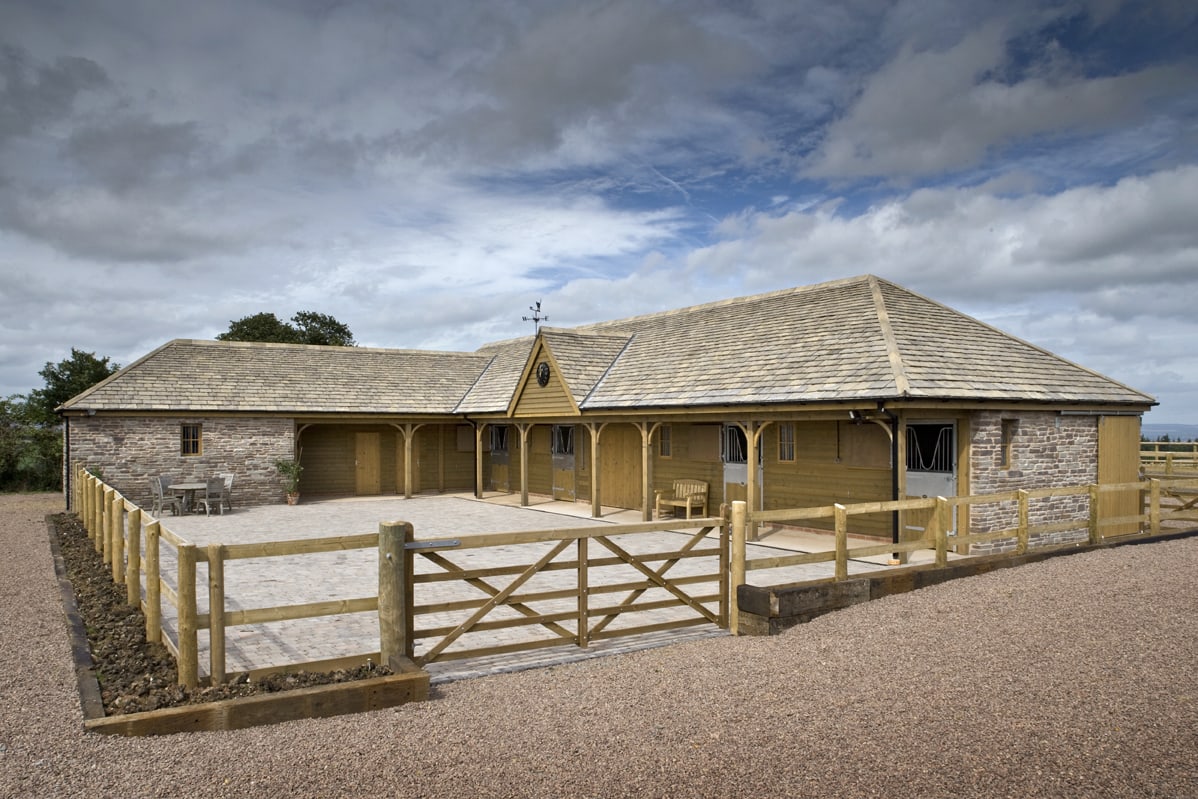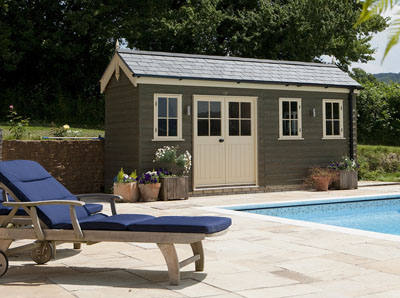As the climate change agenda becomes more urgent, we have never been more overtly attuned to the influence, impact, and benefit of the natural world on our daily lives. Growing recognition of biophilia or ‘passionate love of …all that is alive’ means that plants and trees have become integral elements in the design of our homes, from the house to the garden, in summer, winter and all seasons.
A summerhouse fosters our love of nature by bringing us closer to the great outdoors for longer during the year, enabling us to get up close and personal with the changes we might miss from inside our properties. Your desire for a garden building might stem from a love of being outdoors, an interest in wildlife, or a passion for your garden. This is a space where you truly appreciate nature’s bounty from a place of peace and relaxation should integrate perfectly with your outdoor space and complement the wild and natural aspects of your garden. Below we consider how the planting you arrange around your summerhouse, and the plants you keep inside it, can further enhance your enjoyment of this special haven.
Greenhouse effect
Houseplants contribute to our wellbeing by actively cleansing the air of toxins and air pollutants. In addition to their purifying and de-humidifying qualities, plants help to reduce stress and boost concentration. Great examples for your summerhouse shelves include bamboo palms, spider plants and English ivy. Choose plant types that are most likely to thrive in a warm and bright environment such as:
Succulents: these plants are available in a variety of shapes and sizes and adapt well to hot, dry weather.
Cacti: similar to succulents, cacti are also well suited to warm, dry conditions. They are available in many different shapes and sizes and can add interesting texture to your summerhouse décor.
Tropical plants: palms, ferns and orchids thrive in warm humid environments making them ideal for summerhouses.
Herbs: if you plan to use your summerhouse to host a barbecue, consider growing herbs such as basil, thyme, and rosemary nearby for easy access. These plants require plenty of sunlight and warmth making them a great choice for a garden building setting.
Flowering plants: many plants do well in warm bright environments including marigolds sunflowers and zinnias. These plants can add a splash of colour to your summerhouse and attract pollinators such as butterflies and bees.
Glazed all around and letting in plenty of light, your summerhouse is an ideal venue for plants that respond to sunshine. Citrus plants, mallows, herbs, and Mediterranean varieties such as oleander and bougainvillea will thank you for the protection that your garden building offers.
When deciding on the best plants to choose for your summerhouse setting, be sure to consider the specific conditions in your location including the amount and direction of sunlight and the level of humidity. If you have a summerhouse with a rotating base, it might be worth turning it away from the sun when you leave the building on our (rare) really hot days.
The plants in your summerhouse may require watering more often to accommodate the heat gain from glass windows and doors. Check the soil every few days and top up if dry. Keep particularly sensitive plants out of direct sunlight at the back of your garden building. Feed plants once a month with good quality plant food to keep them in tip-top condition and help boost growth. Keep a spray bottle of water handy and mist the leaves as often as possible. Don’t forget to deadhead flowering plants to encourage new blooms to burst forth.
Displaying plants inside your summerhouse couldn’t be easier with so many types of pots, stands and holders available. Choose from plant stands made from timber or metal in a range of heights like these on the Etsy website. Or visit your local antiques centre or auction house and pick up a heritage item from your favourite period. Maximise roof space inside your summerhouse by suspending plant pots from the ceiling or adding wall hooks for hanging baskets. Waitrose offers a range of hanging plant holders made from wicker, chicken wire, glass and stainless steel. There’s a huge section of plant pots and holders on the Dunelm website from wire-framed to galvanised metal and bamboo.
If you’re a gardening enthusiast, you could enlist your summerhouse as a halfway house for seedlings, enabling you to extend the active gardening calendar by several months. Ornamental gardeners could sow sunflowers, narcissus, hellebores, and calendula from January to March. It’s also a good idea to bring frost-sensitive plant types such as dahlias and gladioli indoors to over-winter safely. If you opt to add insulation to your summerhouse walls, you will help to create a cosy hibernation space for your favourite flowers.
Natural setting
When you are planning your summerhouse installation project, you will need to create a firm base on which it can stand. The more solid the foundation, the longer you will be able to enjoy your summerhouse. Whether your garden building is located on a patio, paving slabs, deck, or secured using a ground screw base, you will be able to landscape the area around it to set off its decorative appeal to maximum effect. This can be achieved with hard landscaping, but it will be the verdure and greenery that delivers a ‘wow’ if you get the planting right.
When selecting plants for the area outside your summerhouse, be sure to consider its position in your garden and how this affects the amount of sunlight, and the prevailing wind direction. Think also about the type of soil you have as well as your personal preferences. Choose colours that complement your chosen paint colour for the outside of your timber summer house.
Types of plants that work well alongside a summerhouse setting include:
Climbing plants: clematis, honeysuckle, and ivy can add a beautiful and natural touch to the exterior of your summerhouse. These are best supported on trellises or wires but keep them away from the fabric of the building to avoid ingress.
Fragrant plants: fragrant plants such as lavender or jasmine can create a relaxing ambience around your summerhouse. Do bear in mind that these plants prefer well drained soil and partial sun and may grow better if they are planted in pots.
Ornamental grasses: miscanthus or Calamagrostis can add texture and movement to gently blur the edges of your garden building. Also preferring well drained soil, grasses perform best with plenty of sunshine.
Flowering shrubs: hydrangeas and roses are ideal choices to add a pop of colour to your planting scheme. They prefer moist, well-drained soil and partial sun.
Top tips to boost your summerhouse plant life
- Combine greenery with ornamental blooms to bring your summerhouse colour scheme to life.
- Select plants that are most likely to thrive in your corner of the world.
- Choose hard landscaping that provides a blank canvas for your planting scheme.
- Make sure you have access to water so you can keep your plants moist and healthy.
- Keep your gardening kit and equipment inside your summerhouse by installing free-standing seating with built in storage.
- Insulate and ventilate your summerhouse to keep the air moving and the plants healthy.
- Install shady blinds for those hot summer days (and keep yourself cool at the same time).
Whether you’re an expert gardener or an amateur enthusiast, the possibilities for augmenting your summerhouse setting with attractive planting are endless. If you need some advice on the best location for a garden building at your property, simply contact our expert team and we will be happy to help. Our team is highly experienced and can show you some examples of what our previous clients have achieved, to fire your imagination.
Looking for a summerhouse? Contact us to make your garden room dream come true.










